|
|
|
Sort Order |
|
|
|
Items / Page
|
|
|
|
|
|
|
| Srl | Item |
| 1 |
ID:
144523
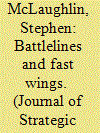

|
|
|
|
|
| Summary/Abstract |
This article explores the development of tactical thought in the Royal Navy during the period leading up to the First World War, and concludes that the direction of tactical thinking and Admiralty construction policy contradict claims put forward by Jon T. Sumida that in 1912 Admiral Sir John Jellicoe developed a ‘technical-tactical synthesis’ that called for fighting at medium ranges (7,000–10,000 yards).
|
|
|
|
|
|
|
|
|
|
|
|
|
|
|
|
| 2 |
ID:
133402
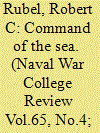

|
|
|
|
|
| Publication |
2012.
|
| Summary/Abstract |
the trade of the world commands the riches of the world and consequently the world itself. For in war . . . the common sense of some and the genius of others sees and properly applies means to ends; and naval strategy, like naval tactics, when boiled down, is simply the proper use of means to attain ends. But in peace, as in idleness, such matters drop out of mind, unless systematic provision is made for keeping them in view.
The last great sea battle occurred in 1944. Since then the world ocean has been open to free navigation by all nations as a matter of American policy. The ability to enforce this policy-or perhaps better said, the absence of serious challenges to this policy-has been in significant part a product of the superiority of the U.S. Navy. Despite a latent and partial challenge during the Cold War by the Soviet navy, since World War II the degree and persistence of U.S. Navy superiority have led most people to take it for granted and have caused the old term "command of the sea" virtually to disappear from the naval lexicon.1 However,
the emergence of a powerful Chinese navy and an associated land-based seadenial force is stimulating a new focus on sea control and overcoming antiaccess/ area-denial efforts. New concepts, such as "AirSea Battle," are being developed and investments made in platforms, weapons, and systems. This activity is critical to American strategic interests and prospects, and it must be informed by an understanding of command of the sea as a foundational concept of sea power. A reconsideration of command of the sea is all the more necessary as political, economic, and technological developments have significantly changed the nature of how sea power influences the dynamics of geopolitical interactions. This article will argue for an extended definition of the term and its renewed application to naval strategy and doctrine.
|
|
|
|
|
|
|
|
|
|
|
|
|
|
|
|
| 3 |
ID:
146868
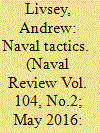

|
|
|
| 4 |
ID:
148413
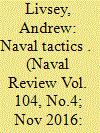

|
|
|
| 5 |
ID:
150142
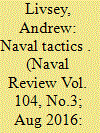

|
|
|
| 6 |
ID:
150444
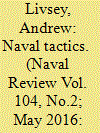

|
|
|
| 7 |
ID:
039831
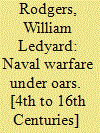

|
|
|
|
|
| Publication |
Annapolish, Naval Institute, 1967.
|
| Description |
xiii, 358p.
|
| Standard Number |
087021487X
|
|
|
|
|
|
|
|
|
|
|
|
Copies: C:1/I:0,R:0,Q:0
Circulation
| Accession# | Call# | Current Location | Status | Policy | Location |
| 031683 | 359.409/ROD 031683 | Main | On Shelf | General | |
|
|
|
|
| 8 |
ID:
085673
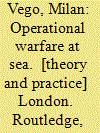

|
|
|
|
|
| Publication |
London, Routledge, 2009.
|
| Description |
xiii, 272p.
|
| Standard Number |
9780415770040
|
|
|
|
|
|
|
|
|
|
|
|
Copies: C:1/I:0,R:0,Q:0
Circulation
| Accession# | Call# | Current Location | Status | Policy | Location |
| 054084 | 359/VEG 054084 | Main | On Shelf | General | |
|
|
|
|
| 9 |
ID:
133398
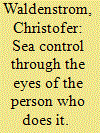

|
|
|
|
|
| Publication |
2013.
|
| Summary/Abstract |
This article suggests a new perspective on the old problem of protecting ships at sea, for two reasons. First, although screen tactics and other defensive measures have been developed and used for many years, this new perspective will be useful in addressing two developments since the late nineteenth century: attackers are no longer just other ships but also aircraft, submarines, and, recently, missiles with very long ranges launched from the land; also, torpedo boats, coastal submarines, and mines have complicated operations in congested and archipelagic waters. The second reason for a new approach is that in order to support commanders in the problems of sea control we need to study the issues they encounter while solving them. This requires a description of each task that commanders have to do; without such a description it becomes difficult to determine which actions lead to increased control and which to loss of control, which in turn makes it harder to identify whether commanders are running into trouble and if so, why. The new analytical method introduced here represents an attempt at such a description. As such, it may enrich and extend traditional thinking about sea control and how to achieve it, especially in littoral waters.
|
|
|
|
|
|
|
|
|
|
|
|
|
|
|
|
| 10 |
ID:
130283
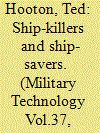

|
|
|
|
|
| Publication |
2013.
|
| Summary/Abstract |
The anti-ship missile is regarded as the greatest threat to surface combatants and merchantmen in modern naval warfare with the threat coming from the air, the land, the sea and from under the sea.
|
|
|
|
|
|
|
|
|
|
|
|
|
|
|
|
| 11 |
ID:
133063
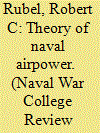

|
|
|
|
|
| Publication |
2014.
|
| Summary/Abstract |
The U.S. Navy has never been comfortable with theory or doctrine at what is now known as the operational level of war. The Navy has always possessed robust ship- and formation-level doctrine-tactics-and of course has embraced the high-level sea-power theories of both Alfred Thayer Mahan and Julian Corbett. The gap in the middle either has not been needed-as has been essentially the case for most of the Navy's history except for World War II-or has been filled by adaptive practice in the form of specific campaign or operations plans. For the Navy, the old framework of strategy and tactics has sufficed since 1945. However, an emergent set of circumstances in the form of Chinese naval development, as well as a new generation of weapons and sensors, is driving the Navy into incorporating the operational level into its culture. Moreover, this development is bringing the Navy into competition, or perhaps conflict, with the U.S. Air Force over which should exert operational control of aviation over the water. Whereas this task was always presumed to be the preserve of the Navy, the establishment in Hawaii of a regional Air Operations Center (AO C) that
in theory controls all air in the theater will challenge Navy assumptions and equities. The tactics of interservice squabbling aside, the Navy will need a theory of naval airpower as a foundation for its arguments to preserve operational control of its aviation.
|
|
|
|
|
|
|
|
|
|
|
|
|
|
|
|
| 12 |
ID:
186204
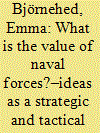

|
|
|
|
|
| Summary/Abstract |
There are several, often mentioned, strategic and tactical advantages related to naval forces which occur as a result of their inherent characteristics. Because they possess both mobility and a light footprint, naval forces have the ability to be simultaneously present in a given place while being minimally intrusive, a feat no other service branch can accomplish: “[t]he fact that naval forces can ´loiter´ and be minimally intrusive is an important and unique contribution to deterrence. The Army can loiter, but it cannot be minimally intrusive; the Air Force can be minimally intrusive but it cannot loiter. Only naval forces can do both simultaneously” (UK Maritime Power 2017, 37). Moreover, with the sea as the area of operations naval forces are an essential instrument for the state not only in war, but in peacetime as well. In comparison to the army and air force, naval forces are useful to the state outside a war context as they provide prosperity to the state through the protection of shipping lanes and civilian vessels. Given these inherent and unique characteristics and our unchanging dependence on the sea for goods and trade, the value of naval forces would seem self-evident.
|
|
|
|
|
|
|
|
|
|
|
|
|
|
|
|
|
|
|
|
|